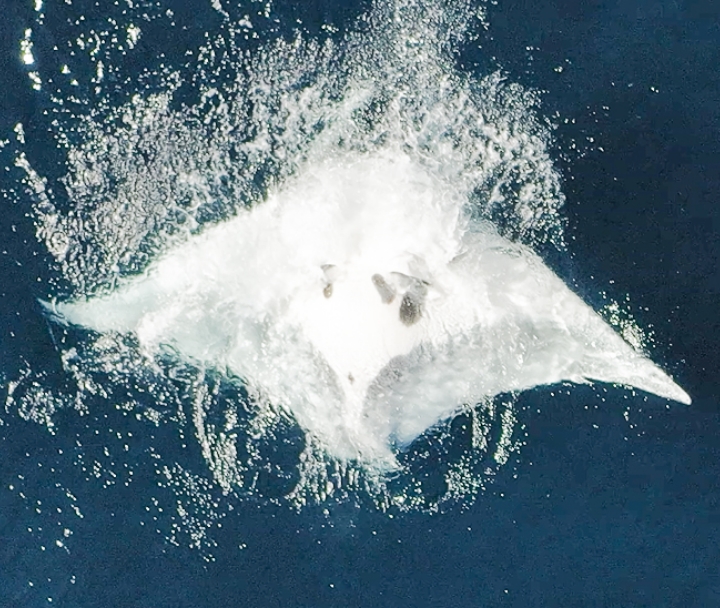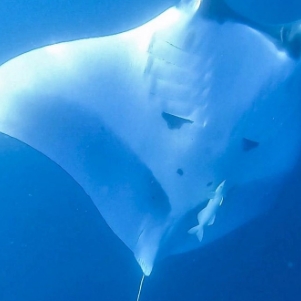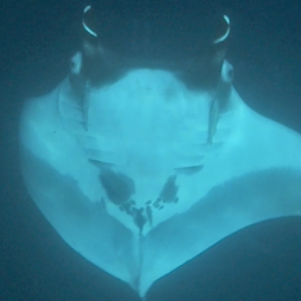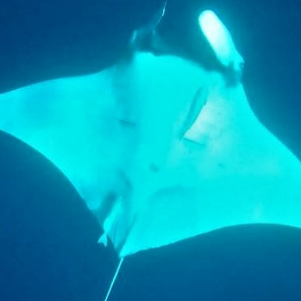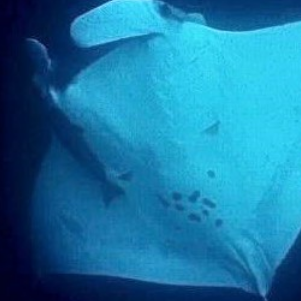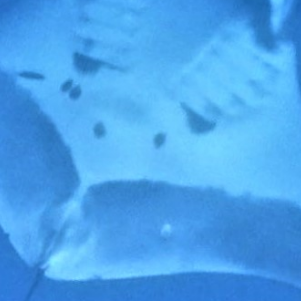To the trained eye an ID image offers a lot more information about an individual manta then just it’s belly spots. Gender, injuries (and their origin), tail length and hitchhikers i.e. fish that closely associate with mantas such as remora are all important elements to each manta ray’s story.
The target location for getting a good ID shot usually reveals the manta’s gender, which is really important because this information can be used to calculate proportions of males and females in the population. Determining the maturity status i.e. whether an individual is sexually active or not is equally as critical, providing further insight into the populations’ composition and health.
A male’s maturity directly relates to the size and shape of his claspers which can be captured along with his ID. Claspers that are pronounced (easy to spot) and extend past the male’s anal fins are clear signs of sexual maturity. Whereas tiny claspers, that are much harder to spot are found on juvenile or sub adult males.
There are a couple more details to look for when verifying a females maturity status and often requires additional images. The more images available, the more information we have to learn about each manta ray. For this reason when our team encounter a manta, we take numerous images as well as video footage from every possible angle and we strongly encourage our citizen scientists to do the same.



